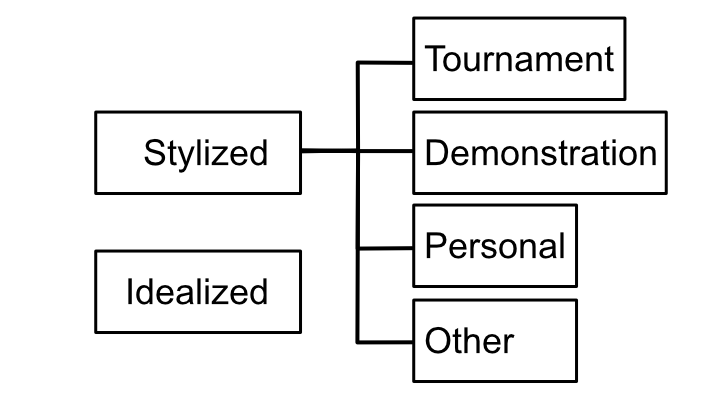The execution of any form can be broken down into two major execution styles: idealized and stylized. Idealized execution is the strict execution of the form as intended by the system. It is literally how the form should be officially executed. This method of execution is the standard style for learning, testing, and formal situations. The stylized method of executing the form is demonstrated under many other, non-formal circumstances. Each style of execution having its purpose and its place.
Stylized execution of a form can arise from any number of circumstances, ranging from: personal preferences, targeting of individual physical abilities, tournament results and desires, demonstration and exhibition needs, emphasizing or enhancing realism, to a vast array of other individual or group prospects, practices, and/or requirements. The possibilities are essentially endless. But what each has in common is that they all demonstrate an alteration to the idealized style of execution. These changes can be manifested in any number of ways and really has no limit to either extent nor function.
Whereas this guide is purposely tailored to concentrate solely on the idealized method of executing the form, having different execution styles is not discouraged within the system. It is such a recognized topic that it is even physically built into the salutation. This oft overlooked salutation variation makes it easy to inform the observer(s) whether the execution of the form will be idealized or stylized. For more information, refer to the "Variations" section of the "Salutation" chapter of this guide.
One of the major reasons this guide series is focused primarily on the idealized style of execution is because stylized execution often morphs into idealized execution. And this transformation, whether intentional or not, has a high degree of probability to permanently alter the originally envisioned, physical execution and purpose of the forms. Therefore, a non-alterable record of original intent and physical execution is not only desirable, but essential for the historical preservation of the art.

Form execution style